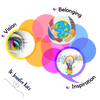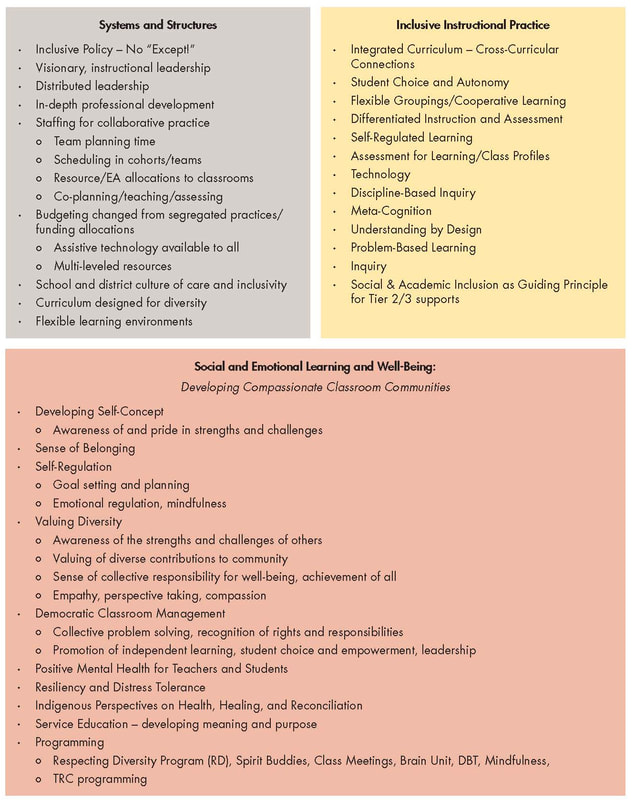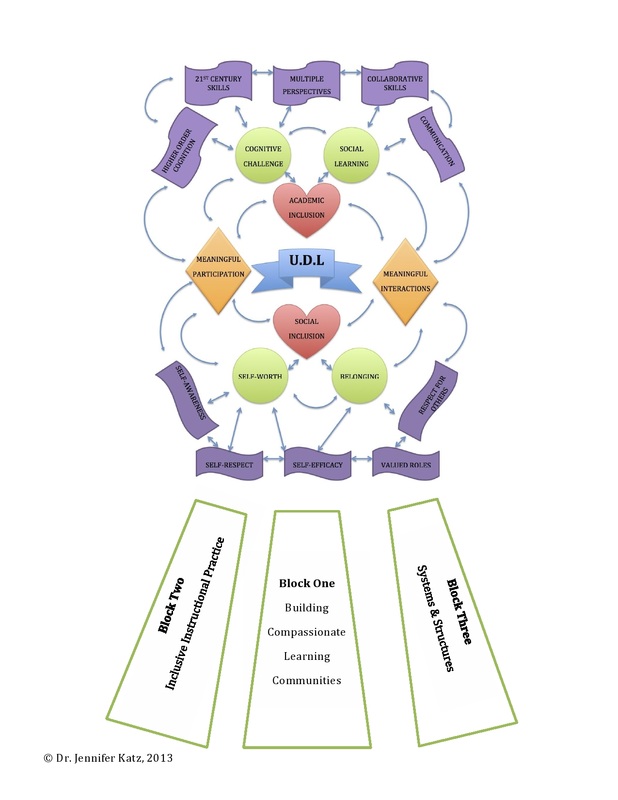The Three-Block Model of UDL
The Three Block Model of UDL is the "how to" piece we need for creating socially and academically inclusive classrooms. However, there is much more to it than just the practical how - we have to understand why we are doing what we are doing - what is our vision? What are we trying to achieve, for our students, ourselves as teachers, and our communities?
We often talk about UDL as being driven by the goal of accessibility - we want all students to have access to the social and academic life of the classrooms. However, recent conversations I have had have made me realize - ACCESSIBILITY IS NOT ENOUGH. We can have access to a building, to a social gathering, to a learning opportunity - and not really be MEANINGFULLY able to participate or be included. Just wheeling a student into a room, or adapting the lesson for them and having them working on a separate task away from their peers does not allow them to meaningfully participate in the life of the classroom, with their peers, not alongside them. Accessibility is the first step, but it doesn't end there - it has to be meaningful - for the student, for the learning community, for their teachers and families. This is a much deeper level than just the practical act of differentiating our instruction, it forces us to wrestle with the roots of our humanity - what does it mean to feel connected, included...like we belong? How do we help all students feel that they have something worthwhile to contribute - including those with significant disabilities, behavioral challenges, or trying to learn English as an additional language? What about students from poverty? From minority cultures?
There are no simple answers to these questions - but as a profession, they are ones we must wrestle with, and creative a vision for our field and ourselves as professionals in that field in terms of the fundamental human desire to connect and be valued. All children deserve that.
Thus the Three-Block Model promotes four pillars: Self-worth, Belonging, Cognitive challenge, and Social learning. Research tells us self-worth and belonging are critical factors in mental health, student engagement, achievement, and attendance. Cognitive challenge means that all students are met where they are, and provided with an appropriate learning environment and instructional design for them. The challenge of social learning - the opportunity to learn in interaction with peers - is to design instruction that allows students of different background and skills to learn TOGETHER.
We often talk about UDL as being driven by the goal of accessibility - we want all students to have access to the social and academic life of the classrooms. However, recent conversations I have had have made me realize - ACCESSIBILITY IS NOT ENOUGH. We can have access to a building, to a social gathering, to a learning opportunity - and not really be MEANINGFULLY able to participate or be included. Just wheeling a student into a room, or adapting the lesson for them and having them working on a separate task away from their peers does not allow them to meaningfully participate in the life of the classroom, with their peers, not alongside them. Accessibility is the first step, but it doesn't end there - it has to be meaningful - for the student, for the learning community, for their teachers and families. This is a much deeper level than just the practical act of differentiating our instruction, it forces us to wrestle with the roots of our humanity - what does it mean to feel connected, included...like we belong? How do we help all students feel that they have something worthwhile to contribute - including those with significant disabilities, behavioral challenges, or trying to learn English as an additional language? What about students from poverty? From minority cultures?
There are no simple answers to these questions - but as a profession, they are ones we must wrestle with, and creative a vision for our field and ourselves as professionals in that field in terms of the fundamental human desire to connect and be valued. All children deserve that.
Thus the Three-Block Model promotes four pillars: Self-worth, Belonging, Cognitive challenge, and Social learning. Research tells us self-worth and belonging are critical factors in mental health, student engagement, achievement, and attendance. Cognitive challenge means that all students are met where they are, and provided with an appropriate learning environment and instructional design for them. The challenge of social learning - the opportunity to learn in interaction with peers - is to design instruction that allows students of different background and skills to learn TOGETHER.


